Turbulent Flow Behind an Open-Slit V
In this application, AcuSolve is used to simulate turbulent flow of air through and behind a two dimensional open-slit V. AcuSolve results are compared with experimental results adapted from Yang and Tsai (1993). The close agreement of AcuSolve results with experimental results validates the ability of AcuSolve to model the Coandă effect.
Problem Description

Figure 1. Critical Dimensions and Parameters for Simulating Turbulent Flow Behind an Open-Slit V
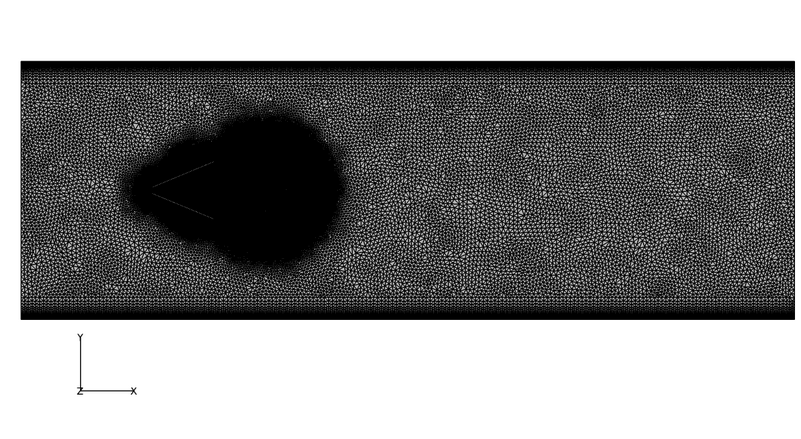
Figure 2. Mesh used for Simulating Turbulent Flow Behind an Open-Slit V (the V Lies Within the Dense Area of the Mesh)
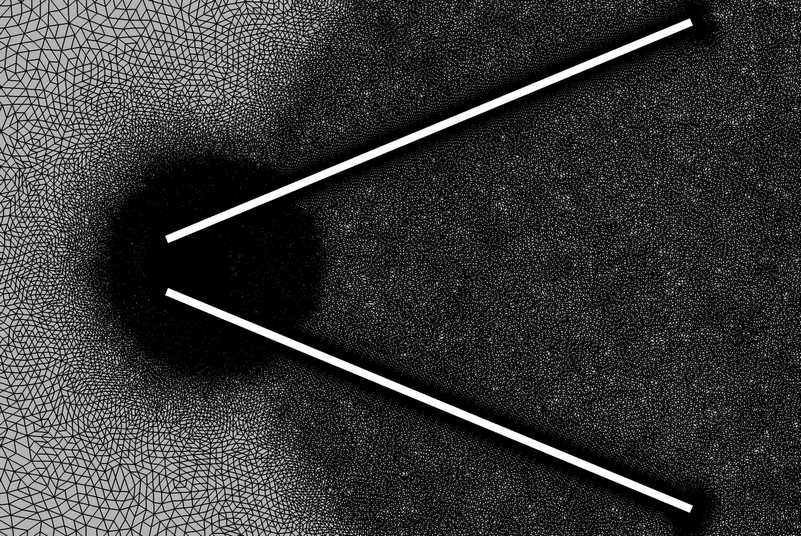
Figure 3. Mesh Surrounding the Open-Slit V
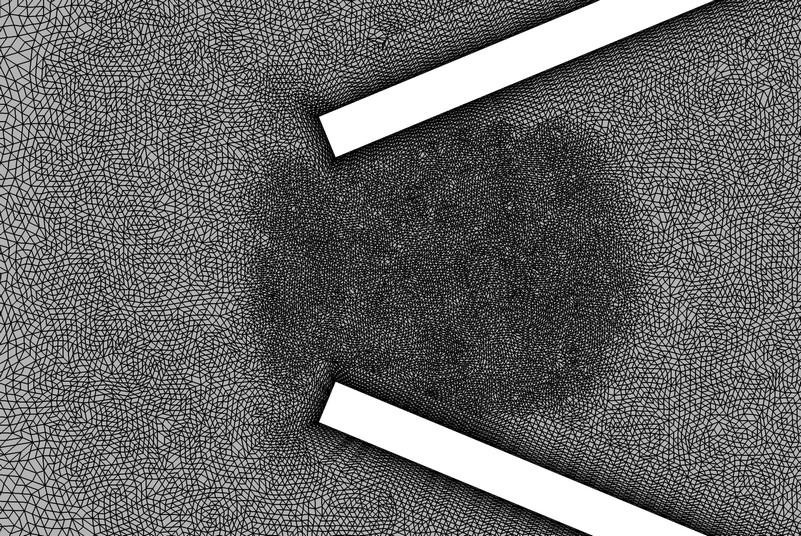
Figure 4. Mesh Near the Open Slit
AcuSolve Results
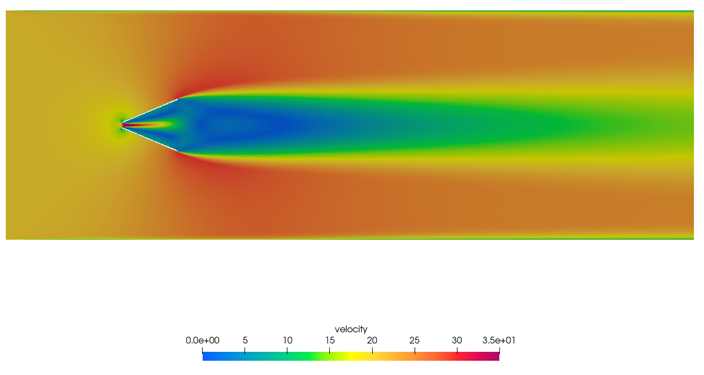
Figure 5. Contours of X-Velocity of Flow Through and Around an Open-Slit V (the Vertical Line Represents the Location, 0.022 m Downstream from the V exit, at Which Experimental Data is Compared to AcuSolve Results)
AcuSolve results were compared to experimental results at different heights 0.022 m behind the V exit. X-velocity is near zero at the bottom of the domain (height = -0.05 m), rising steeply with distance from the wall. The velocity gradient decreases until approximately 0.018 m below the center line of the domain, which is slightly below the bottom of the V exit. The velocity behind the V drops sharply with an increase in height, due to the blockage caused by the presence of the slanted walls. The lowest velocity is just above the center line of the domain.
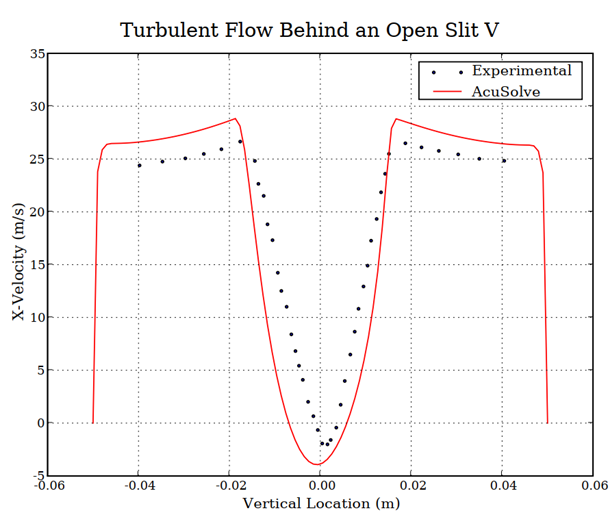
Figure 6. X-Velocity Plotted Against Vertical Location 0.0022 m Downstream of the V Exit
Summary
The AcuSolve results compare well with the experimental results for flow through and around an open-slit V. In this application, the V-shaped geometry diverts flow towards the side walls of the channel and also creates a high-velocity jet through the slit. The low pressure associated with the jet causes a deflection towards the walls of the V, resulting in an asymmetric flow field within the V shape. This application illustrates the ability of AcuSolve to accurately predict the Coandă effect. The acceleration of the flow due to the deflection along the V-shaped walls and the momentum deficit in the wake of the V is captured accurately.
Simulation Settings for Turbulent Flow Behind an Open-Slit V
HyperWorks CFD database file: <your working directory>\v_gutter_turbulent\v_gutter_turbulent.hm
Global
- Problem Description
- Analysis type - Steady State
- Turbulence equation - Spalart Allmaras
- Auto Solution Strategy
- Relaxation factor - 0.5
- Material Model
- Air
- Density - 1.0 kg/m3
- Viscosity - 1.8333e-05 kg/m-sec
Model
- Air
- Volumes
- Fluid
- Element Set
- Material model - Air
- Element Set
- Fluid
- Surfaces
- Inlet
- Simple Boundary Condition
- Type - Inflow
- Inflow type - Velocity
- X velocity - 20.0 m/sec
- Eddy viscosity - 0.000800426 m2/sec
- Simple Boundary Condition
- LE_TE
- Simple Boundary Condition
- Type - Wall
- Simple Boundary Condition
- Outlet
- Simple Boundary Condition
- Type - Outflow
- Simple Boundary Condition
- Symm_MaxZ
- Simple Boundary Condition
- Type - Slip
- Simple Boundary Condition
- Symm_MinZ
- Simple Boundary Condition
- Type - Slip
- Simple Boundary Condition
- V_Walls
- Simple Boundary Condition
- Type - Wall
- Simple Boundary Condition
- Walls
- Simple Boundary Condition
- Type - Wall
- Simple Boundary Condition
- Inlet
References
J.-T. Yang and G.-L. Tsai. "Near-wake flow of a v-gutter with slit bleed". Journal of Fluid Engineering. 115:13-20. March, 1993.